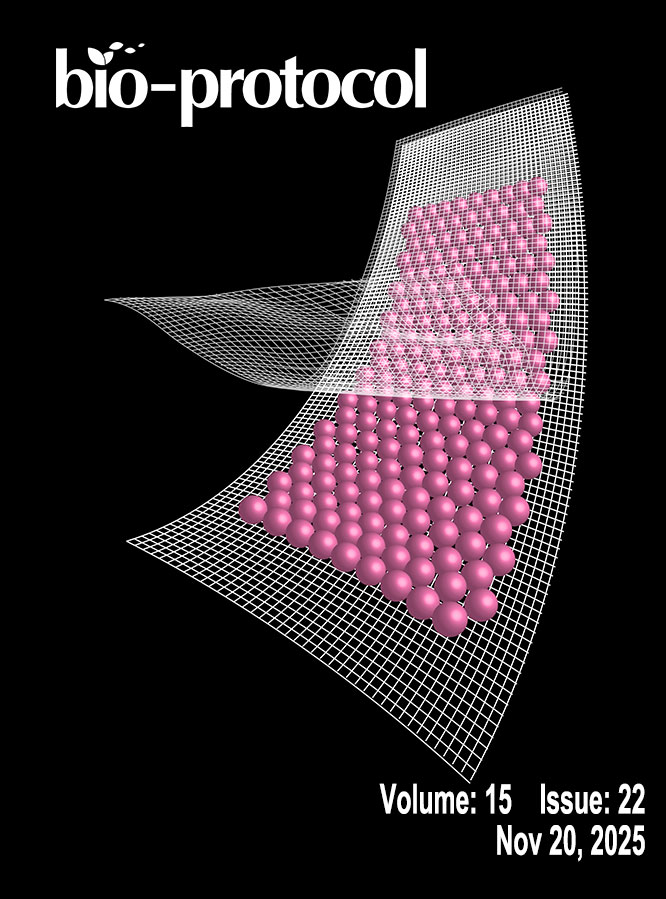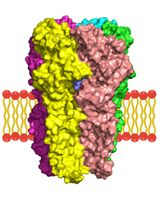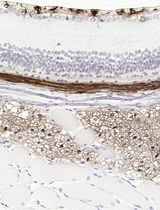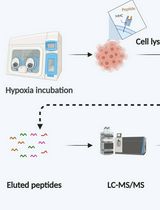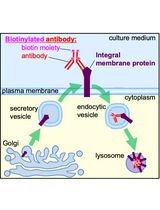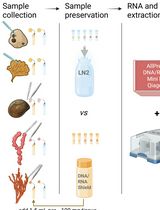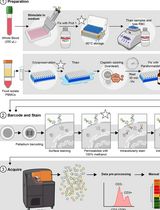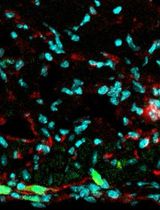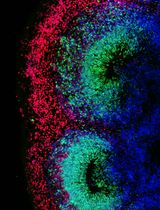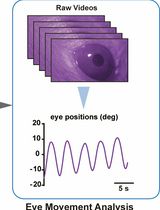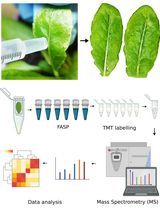现期刊物2025
卷册: 15, 期号: 22
生物化学
Quantifying Intestinal Glucose Absorption Using Isolated Vascularly Perfused Rat Small Intestine
利用离体灌流大鼠小肠模型定量分析肠道葡萄糖吸收
生物信息学与计算生物学
Click-qPCR: A Simple Tool for Interactive qPCR Data Analysis
Click-qPCR:一种用于交互式 qPCR 数据分析的简便工具
A Computational Workflow for Membrane Protein–Ligand Interaction Studies: Focus on α5-Containing GABA (A) Receptors
膜蛋白–配体相互作用研究的计算流程:以含 α5 亚基的 GABA(A) 受体为例
A Step-by-Step Computational Protocol for Functional Annotation and Structural Modelling of Insect Chemosensory Proteins
昆虫化学感受蛋白的功能注释与结构建模分步计算流程
生物工程
Spheroid Sheets: A Scalable Platform for Producing Tissue Membrane Constructs
球状细胞片:可规模化生产组织膜结构的平台
癌症生物学
Improved Immunohistochemistry of Mouse Eye Sections Using Davidson's Fixative and Melanin Bleaching
采用 Davidson 固定液和黑色素漂白法优化小鼠眼组织切片的免疫组化染色
Immunopeptidomics Workflow for Isolation and LC-MS/MS Analysis of MHC Class I-Bound Peptides Under Hypoxic Conditions
缺氧条件下 MHC I 类分子结合肽的分离与 LC-MS/MS 分析免疫肽组学流程
细胞生物学
Monitoring Endocytosis of Integral Membrane Proteins Using Western Blot-Based Detection of Biotinylated Antibody Uptake
利用基于 Western blot 的生物素化抗体内吞检测法监测膜整合蛋白的内吞过程
Rapid and solvent-free, 2-hydroxyethyl methacrylate (HEMA)-acrylamide (AAm) copolymer-based optical clearing of tissue for fluorescent imaging
基于HEMA-AAm共聚物的快速无溶剂组织透明化方法用于荧光成像
环境生物学
A Comparative Protocol for Preserving Deep-Water Marine Invertebrate Tissues: DNA/RNA Shield vs. Liquid Nitrogen for Dual Extraction of High-Quality Nucleic Acids
深海无脊椎动物组织保存的比较方案:DNA/RNA Shield 与液氮在高质量核酸双重提取中的应用对比
免疫学
Dual Phospho-CyTOF Workflows for Comparative JAK/STAT Signaling Analysis in Human Cryopreserved PBMCs and Whole Blood
用于比较人冷冻保存 PBMC 与全血中 JAK/STAT 信号通路的双磷酸化 CyTOF 流程
医学
In Vivo Retroviral Transduction of Cardiac Myofibroblasts Using Intramyocardial Injection Immediately Post-myocardial Infarction
心肌梗死后即刻进行心肌内注射,实现心脏肌成纤维细胞的体内逆转录病毒转导
神经科学
Characterizing Tissue Oxygen Tension During Neurogenesis in Human Cerebral Organoids
人脑类器官神经发生过程中组织氧张力的表征
Intracerebral Cannula Implantation in Mouse: A Proposed Method to Assess Glioblastoma Invasiveness and Serial Locoregional Treatment
小鼠脑内套管植入术:一种用于评估胶质母细胞瘤侵袭性及局部连续治疗的实验方法
Mouse Vestibulo-Ocular Reflex Testing for Otolith Organs and Horizontal Semicircular Canal
小鼠耳石器与水平半规管的前庭–眼反射测试方法
Selective Enrichment and Identification of Cerebrospinal Fluid-Contacting Neurons In Vitro via PKD2L1 Promoter-Driven Lentiviral System
基于 PKD2L1 启动子驱动的慢病毒系统在体外选择性富集与鉴定脑脊液接触神经元
植物科学
Quantitative Analysis of the Arabidopsis Leaf Secretory Proteome via TMT-Based Mass Spectrometry
基于 TMT 的质谱技术对拟南芥叶片分泌蛋白组的定量分析


